Architect Peter Yeadon, along with his students at RISD, has created studies of various buildings in four contemporary buildings. The silent videos use 3d computer modeling and color-coding to look at the relationship between structure, skin, and mechanical systems.
Hearst Headquarters, NYC:
Institute for Contemporary Art, Boston:
New Museum for Contemporary Art, NYC:
Museum of Arts and Design, NY:
Architectural engineering design.autocad career .learnin,news,architecture design tutorial,
Thursday, January 31, 2013
Today's archidose #647
Here are some photos of the new headquarters of Bilbao City Hall in San Agustín, Bilbao, Spain, designed by IMB Arquitectos (2011). Photographs are by by Pawel Paniczko.

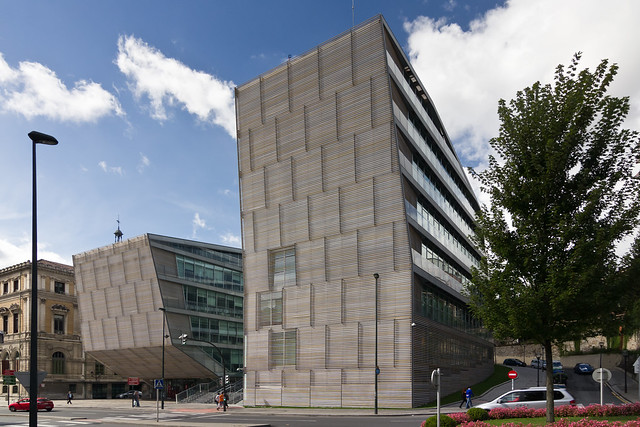
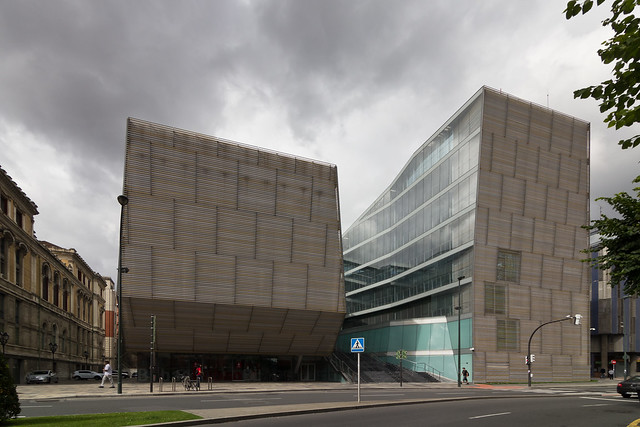


To contribute your Flickr images for consideration, just:





To contribute your Flickr images for consideration, just:
:: Join and add photos to the archidose pool, and/or
:: Tag your photos archidose
Wednesday, January 30, 2013
"Deconstructivist Architecture" at 25

It was 25 years ago this summer that the Museum of Modern Art (MoMA) held the Deconstructivist Architecture exhibition, curated by Philip Johnson with Mark Wigley. The show featured drawings and models for ten major projects by seven architects: Coop Himmelb(l)au, Peter Eisenman, Frank Gehry, Zaha Hadid, Rem Koolhaas, Daniel Libeskind, and Bernard Tschumi. Three have won Pritzker Prizes since 1988, and all are well known now, but at the time they were hardly familiar names.

MoMA has put some pieces from their collection that were in the 1988 exhibition back on display in a small room in the contemporary galleries on the second floor. Pieces like Coop Himmelb(l)au's model of the Rooftop Remodeling in Vienna (pictured here) are also accompanied by some pieces that were not in the show, like Eisenman's drawings for House VI. The few drawings and models on display aren't much of a 25-year celebration of what can be seen as a very influential show (not as influential as the International Style exhibition of 1932, but still important considering the subsequent careers of the seven architects and their influence on countless others), but MoMA did at least hold a panel discussion with Eisenman, Tschumi, Wigley, and curator Barry Bergdoll. For those who couldn't make it to the event, MoMA has shared a video of all 90 minutes of it:
After attending the panel discussion and seeing the model of the Rooftop Remodeling alongside other projects that influenced my undergraduate education, I wrote an "Insight" piece for World-Architects that looks back to Deconstructivist Architecture and traces the subsequent careers of the seven architects, examining the impact of the show and the changes in architecture in the last 25 years.
Modern Gothic: Astley Castle
Ever wondered what it would be like to stay overnight in a castle? The Landmark Trust in Britain allows you just that pleasure. One of many properties they offer was recently the center of much debate and an ingenius renovation: Astley Castle.
Featured in the January 2013 issue of House and Garden magazine, the castle was a ruined shell since 1978 when the hotel it housed burned to the ground. However it held a storied past dating to the 12th century despite its rather forlorn existence throughout the 20th century.
Finally in 2005 a competition was held on how best to utilize the ruined castle. Architects Witherford Watson Mann were chosen who preserved the damaged shell and ingeniusly inserted a modern house - utilizing the ruins to their best advantage.
Those of you who read this blog and/or know me realize I am not a modernist (duh!). However, I love the respectful nature of the new work within the charmingly derelict shell. The texture of the carefully chosen new brick within the original stone walls is beautiful.
The best feature was actually created from the most damaged part of the castle: the al fresco dining room which retains the original fireplace. Imagine dining under the stars fireside, at once inside and outside of the castle!
The emphasis here is of course on the architecture and not the interiors but I love the whimsy of the Gothic dining chairs seen above and the beautiful green curtains. Would you stay here over a vacation?
All photos by Jefferson Smith for House and Garden magazine.
Featured in the January 2013 issue of House and Garden magazine, the castle was a ruined shell since 1978 when the hotel it housed burned to the ground. However it held a storied past dating to the 12th century despite its rather forlorn existence throughout the 20th century.
Finally in 2005 a competition was held on how best to utilize the ruined castle. Architects Witherford Watson Mann were chosen who preserved the damaged shell and ingeniusly inserted a modern house - utilizing the ruins to their best advantage.
Those of you who read this blog and/or know me realize I am not a modernist (duh!). However, I love the respectful nature of the new work within the charmingly derelict shell. The texture of the carefully chosen new brick within the original stone walls is beautiful.
The best feature was actually created from the most damaged part of the castle: the al fresco dining room which retains the original fireplace. Imagine dining under the stars fireside, at once inside and outside of the castle!
The emphasis here is of course on the architecture and not the interiors but I love the whimsy of the Gothic dining chairs seen above and the beautiful green curtains. Would you stay here over a vacation?
All photos by Jefferson Smith for House and Garden magazine.
Tuesday, January 29, 2013
Detecting lost rooms with architectural antennae
 [Image: "Constant time slices" reveal buildings buried in northwestern Argentina; image from, and courtesy of, the Journal of Archaeological Science, "Detecting and mapping buried buildings with Ground-Penetrating Radar at an ancient village in northwestern Argentina," by Néstor Bonomo, Ana Osella, and Norma Ratto].
[Image: "Constant time slices" reveal buildings buried in northwestern Argentina; image from, and courtesy of, the Journal of Archaeological Science, "Detecting and mapping buried buildings with Ground-Penetrating Radar at an ancient village in northwestern Argentina," by Néstor Bonomo, Ana Osella, and Norma Ratto].While reading The Losers last night for the first time—a graphic novel about a team of ex-CIA members now executing a series of elaborate heists against their former employer—I was pleasantly surprised to see that one of the final scenarios involves a small volcanic island featuring an abandoned village that had very recently been buried by ash and pumice.
In a nutshell, the buildings beneath all that rock and ash are still intact—and one of them contains a locked safe that our eponymous group of "losers" is searching for. So begins an unfortunately quite short scene of vertical archaeology: locating the proper building amidst the featureless landscape of ash, blasting a hole down through the building's roof, stabilizing the ceiling from within so that heavy-lifting equipment can be installed on the rooftop, and then descending into the hallways and staircases below by way of mountaineering ropes to find the safe.
For whatever reason, there are few things I find more exciting to read about than high-risk descents into buried cities, especially one that, as in the case of The Losers, remains otherwise indistinguishable from the surface of the earth, only gradually revealing itself to be an extraordinary honeycomb of connected rooms and passages—and this brief moment in the book was made even more interesting when I remembered a handful of articles I'd saved last year, one of which also involves a lost village, buried by volcanic ash.
 [Image: A selection of "time slices" from the buried buildings of northwestern Argentina; image from, and courtesy of, the Journal of Archaeological Science, "Detecting and mapping buried buildings with Ground-Penetrating Radar at an ancient village in northwestern Argentina," by Néstor Bonomo, Ana Osella, and Norma Ratto].
[Image: A selection of "time slices" from the buried buildings of northwestern Argentina; image from, and courtesy of, the Journal of Archaeological Science, "Detecting and mapping buried buildings with Ground-Penetrating Radar at an ancient village in northwestern Argentina," by Néstor Bonomo, Ana Osella, and Norma Ratto].In a 1998 paper from the Journal of Applied Geophysics, called "The use of ground penetrating radar to map an ancient village buried by volcanic eruptions," we read about a village in Japan called Komochi-mura, in Gunma prefecture: "The entire area surrounding the village is covered by a thick deposit of pumice derived from the eruption of Futatsudake volcano of Mt. Haruna, approximately 10km to the southwest of the village."
Beneath the modern village, its predecessor from the middle of the 6th century is buried by the pumice deposits. Since these were laid down over a very short period, the ancient village should survive in a high state of preservation and will therefore contain much significant archaeological information. Ground penetrating radar (GPR) has been used to investigate this site over a period of 10 years. As a result, the plan of the ancient village can be accurately mapped... In this paper, the authors demonstrate how GPR was able to map the structural remains of the ancient village under a deposit of pumice.In addition to various buildings, "pit-dwellings," and other destroyed structures preserved but invisibly buried beneath today's village, "traces of brushwood hedges, paths and other slight features have also been identified by the survey."
These types of articles—on the remote-sensing of buried architectural remains, using technologies that "can detect and map buried structures without disturbing them," in the words of the paper I am about to cite—are increasingly easy to find, but no less interesting because of their ubiquity.
Another paper, then, called "Detecting and mapping buried buildings with Ground-Penetrating Radar at an ancient village in northwestern Argentina," published in 2010 in the Journal of Archaeological Science, describes an archaeological survey in which ground-penetrating radar was used "in order to detect new buildings," including a system of "complex wall distribution and a number of unknown enclosures." These "new buildings," however, were just signals from the earth awaiting spatial interpretation:
The exploration showed signals of mud-walls in a sector that was located relatively far from the previously known buildings. A detailed survey was performed in this sector, and the results showed that the walls belonged to a large dwelling with several rooms. The discovery of this dwelling has considerably extended the size of the site, showing that the dwellings occupied at least twice the originally assumed area. High-density GPR surveys were acquired at different parts of the discovered building in order to resolve complex structures. Interpreted maps of the building were obtained."From the joint analysis of the transverse sections, time slices and volume slices of the data and their time averaged intensity," the authors explain, "we have obtained a final map for the new building"—where the "new" building, of course, is a much older, forgotten one, a structure interpretively remade and refreshed through this newfound legibility.
 [Image: From "Archaeological microgravimetric prospection inside don church (Valencia, Spain)," by Jorge Padín, Angel Martín, Ana Belén Anquela, in a 2012 issue of the Journal of Archaeological Science].
[Image: From "Archaeological microgravimetric prospection inside don church (Valencia, Spain)," by Jorge Padín, Angel Martín, Ana Belén Anquela, in a 2012 issue of the Journal of Archaeological Science].Architecture, in this context, comes to our attention first as a series of "intensity blots continued through consecutive slices," an almost impossibly abstract geometry of signals and reflections, of patterned "electromagnetic responses" hidden in the landscape.
In all of these cases, it'd be interesting to propose a kind of archaeological discovery park the size of a football stadium, whose interior is simply a massive, open-span paved landscape on which small devices like floor-waxing machines or lawnmowers have been parked. Paying visitors can walk out onto this vast, continuous monument of bare concrete where they will begin moving the machines around, cautiously at first but then much more ambitiously, revealing as they do so the underground perimeters and outlines of entire villages buried deep in the mud and gravel beneath the building. The "park" is thus really a kind of terrestrial TV show of invisible architecture previously lost to history but beautifully preserved—that is, entombed—in the geology below.
In any case, in writing this post I've realized that I've accumulated over the past two years or so several gigabytes' worth of PDFs about these and other archaeological technologies—from mapping ancient ships buried in the Egyptian pyramids and micro-gravity detection of "shallow subsurface structures" in a church in Italy ("indicating," in the authors' words, "that the actual church was constructed above another one") to "archaeomagnetic data" taken from Roman sites in Tunisia—but here's at least one more reference for good measure.
In a paper called "Ground penetrating radar (G.P.R.) surveys applied to the research of crypts in San Sebastiano’s church in Catania (Sicily)," from a 2007 issue of the Journal of Cultural Heritage, a team of Italian geophysicists explored "natural or anthropic buried cavities" under a church in Sicily—that is, both architectural chambers and caves physically inaccessible in the foundations of the building. Soon enough, the authors write, "the existence of hidden structures was revealed."
"In fact," they add, "a crypt with a barrel vault, under the central aisle of the church, and a room of small dimensions next to this crypt were identified. Moreover, near the altar, the presence of a quadrangular crypt with a cross-vault was revealed. The presence of such buried masonries confirms that the church, rebuilt on previous building rests, has been subjected along the centuries to repeated repairs."
 [Image: The church of San Sebastiano in Catania, Sicily, courtesy of the regional tourism council].
[Image: The church of San Sebastiano in Catania, Sicily, courtesy of the regional tourism council].There is something particularly awesome—that is, it is a story that lends itself particularly to metaphor—about envisioning a squad of well-equipped scientists setting up shop in a church in Sicily, using radar and rigs of strange antennae to scan the structure around them for secret rooms, heavenly nooks and crannies out of human reach. A kind of electromagnetic baroque. The paper cited in a caption above—"Archaeological microgravimetric prospection inside don church (Valencia, Spain)," by Jorge Padín, Angel Martín, Ana Belén Anquela, from a 2012 issue of the Journal of Archaeological Science—even includes such strangely resonant lines as calculating against "residual gravity anomalies" in a "microgravimetric correction for the altar," as if the high science of geophysical investigation has been rhetorically wed with theological speculation.
In the words of a paper by N. Farnoosh et al., published in a 2008 issue of NDT & E International, analyzing a given architectural space becomes a question of "buried target detection" using high-tech means—that is, establishing a sustained and coordinated "electromagnetic interaction among the radar antennas, ground, and buried objects."
Here, the study of architectural history can very, very loosely be compared to astronomy: using tools of remote-sensing, including antennae, but targeted downward, into the earth, to reveal the flickering, gossamer traces of something that, for a variety of reasons, humans can't yet physically reach. Like astronomy, then, archaeology and architectural history become a case of interpreting signals from afar, not of stars and supernovae but of lost rooms and buildings beneath our feet.
A clever custom door
Lately, I've been sadly disappointed with most US shelter magazines (haven't you? with the exception of Architectural Digest I suppose). I've resorted to enlarging my subscription pile and now get House & Garden (British); Can I tell you how fantastic each issue of this magazine has been? Well worth the extra import cost.
In the January 2013 issue, the townhouse of designer Michela Imperiali Klemos is featured in a short article thats long on style. I adored the custom door she created between her dining room and kitchen; covered in antique mirrored tiles with hidden Euro hinges and no hardware so it virtually disappears. She even used the tiles vertically to hide the seam where the door opens - brilliant! What do you think of this detail?
Photos by Tom Parker
In the January 2013 issue, the townhouse of designer Michela Imperiali Klemos is featured in a short article thats long on style. I adored the custom door she created between her dining room and kitchen; covered in antique mirrored tiles with hidden Euro hinges and no hardware so it virtually disappears. She even used the tiles vertically to hide the seam where the door opens - brilliant! What do you think of this detail?
Photos by Tom Parker
On the Value of Old Publications
The Architectural League's recent digital presentation of Vacant Lots—their 1987 design study and exhibition—prompted me to flip through my copy of the book that presents some essays and designs for ten vacant lots in New York City. The League's study on affordable housing for infill lots sits on my shelf next to a contemporaneous book on affordable housing, which sets next to a book on architecture projects funded by NYSCA grants.
So the next thing I know, instead of reading Vacant Lots again, I ended up digging out a bunch of books that are similar to it, not in subject but in something else—these books are two-to-four decades old yet purchased much later. Most are well beyond their intended shelf life (these are not the books that have stood the test of time—the Gideon's or the Banham's—and maintained their popularity to this day), but all of them are appealing to me for some reason. Below is a presentation of these books that I grabbed off my shelf and some quick thoughts on why they might be important; all fit neatly into some categories that reflect some personal interests.
Mainly, I think these books capture a not-too-distant past, either in terms of architecture or the writing and presentation used to document it. Also, there is something worthwhile in picking up books a couple decades after they've been published (I'm not recommending to wait that long to get a book, but rather to not pass up a book because it hasn't been published in the last year or two)—there is a certain cultural amnesia these days, and looking at old books reminds us that supposedly new ideas have probably been tried already in one form or another, and that even new things will look old someday.
Guides:

Even before I started work on my Guide to Contemporary New York City Architecture, I already owned a number of guidebooks to architecture in the city, most of which were fairly recent. But as I researched, wrote and assembled the photos and maps for the book, I looked to older books that I found in used bookstores and even thrift stores. This looking back wasn't about figuring out what buildings to include or, to a lesser degree, learning historical aspects of the city; it was about the format, tone, and usability of a guide. A few books I obtained include Paul Goldberger's excellent The City Observed: New York: A Guide to the Architecture of Manhattan (Vintage Books, 1979), which takes a critical look at old and new buildings in Manhattan (and which unfortunately did not extend to the other boroughs as planned); A Look at Architecture: Columbus, Indiana (Visitors Center, Columbus, Indiana, 1984), more a promotional document or souvenir but still a valuable guide on the famous Midwestern town that the Cummins Engine Company built; and Sally B. Woodbridge's and Roger Montgomery's A Guide to Architecture in Washington State (University of Washington Press, 1980), a guide short on descriptions that makes up for it with an excellent "environmental perspective" (Woodbridge's well-done 1992 San Francisco Architecture guide was also helpful for its easy-to-use layout and simple, yet effective b/w maps).
Housing:

Another subject that I've amassed a few old books on is multi-family housing. I've never been one to voraciously pour over the seemingly infinite stream of books on single-family houses, and perhaps that stems from more historical and theoretical interest being focused on housing rather than houses, which tend to be the purview of glossy collections. Most recently I picked up Martin Pawley's Architecture versus Housing (Praeger Publishers, 1971), which traces the history of "publicly financed building projects," particularly in England. Normally this particular history would not interest me too much, but Pawley was such a sharp writer that I considered it a valuable title to have. A couple of the titles I referred to at the beginning are Reweaving the Urban Fabric: Approaches to Infill Housing (NYSCA/Princeton Architectural Press, 1988), a small snapshot of international housing designs in the late 1980s accompanied by well-researched essays by Marta Gutman and Richard Plunz, who wrote the invaluable A History of Housing in New York City; and Vacant Lots (Princeton Architectural Press, 1989), which gives a glimpse at attempts to fill holes in the city's urban fabric by architects like Tod Williams Billie Tsien, Weiss/Manfredi, and others before they were famous.
Buildings:

Not surprisingly, given my predilection for book-length case studies, I have a hard time resisting books on buildings that I like. Eleven Authors in Search of a Building (The Monacelli Press, 1996) is about Peter Eisenman's design for the Aronoff Center for Design and Art at the University of Cincinnati; not surprisingly, the plethora of drawings and photos are accompanied by some dense academic prose by the usual suspects (Sanford Kwinte, Jeffrey Kipnis, Cynthia Davidson, +8). The Construction of the New Headquarters for the Hongkong and Shanghai Banking Corporation (Ian Lambot, 1985) is published by photographer Lambot, who documented the Kowloon Walled City in the amazing City of Darkness; this book on Norman Foster's addition to Hong Kong's skyline is extremely thorough in its documentation of the building's realization (plumbing, water chillers, structural steel, bamboo scaffolding, prefab modules, etc.) but beautiful throughout as he captures the building's evolving form and spaces that are now hidden. Highrise of Homes (Rizzoli, 1982) is more a polemic than a serious proposal to be built; James Wines attempts what many people see as a gulf that can never be bridged—merging the city and suburbs, housing and houses, the modern and the traditional.
Periodicals:

Old magazines are pretty hard to resist because they are often priced at one or two dollars at used bookstores. Usually all it takes is one project I like in its pages and I snag it. But there is the occasional magazine that tackles a broader theme worth examining. While I've never been a fan of postmodern architecture, I couldn't resist buying American Architecture: After Modernism (A+U, 1981), a special issue of Japan's A+U guest edited by Robert A.M. Stern. As postmodernism is being reappraised in books and exhibitions, I'm finding this issue more and more valuable—it has a ton of projects, many now forgotten, and articles by Michael Sorkin and Suzanne Stephens that are, respectively, (cautiously) critical and helpful in providing a larger context. When in Venice last August I happened to find a copy of Domus Dossier 5: Exhibiting (April 1997) at a used bookstore near my hotel. It was a suitable way of gaining a larger understanding of exhibitions and their designs—from Carlos Scarpa to Coop Himmelb(l)au—as I was writing about my first Biennale.
Independent Study:

Somewhat by surprise I realized there are a couple books in my library on independent study, one on students and one on professionals. I was not one of the chosen few at my school to enter the SOM Traveling Fellowship, but a number of fellow alumni from Kansas State University have won the award, so I couldn't pass up Traveling Fellows: Fifteen Years of Student Awards (SOM Foundation, 1997). Like Vacant Lots, this booklet with CD-ROM gives a glimpse at some now common names in their formative years, as they describe how the travel affected them; comments from the SOM jurors are also enlightening. Independent Projects: Experimental Architecture, Design + Research in New York (SITES Books, 1993) collects architecture, planning, and design projects funded by the New York State Council for the Arts from 1988 to 1992. Many of the projects are known because of later publications or projects that came out of the grants, such as Kaplan and Krueger (PA14: Mosquitoes), Smith-Miller + Hawkinson's North Carolina Museum of Art, and Camilo Jose Vergara's New American Ghetto.
Urban Design:

Going to school for urban design five years ago (has it been that long?) did a couple things for my library: it expanded my interest in urban design literature of bygone eras (which isn't very long, considering urban design as an articulated profession or approach dates back to the mid-1950s), and it gave me easy access to discard books at the CCNY library. One book I picked up post-graduation, and which sparked me to write about an unrealized scheme in its pages, is The Pedestrian Revolution: Streets without Cars (Vintage Books, 1974). The book offers practical solutions that are rooted in its time (a chapter on "other mini-vehicles" is charming), so it has not stood the test of time of something like Bernard Rudofsky's historical look at Streets for People. The Regional Plan Association's Urban Design Manhattan (The Viking Press, 1969) is full of overreaching visions for Midtown Manhattan; for example "mechanical aids to pedestrian movement, such as moving belts or quick-access shuttle vehicles." Yet is also has some beautiful diagrams that make the (top-down) information easy to understand. Both of these books are helpful in reminding urban designers that even as their goals are admirable, looking to trends and technology is not always the best route.
So the next thing I know, instead of reading Vacant Lots again, I ended up digging out a bunch of books that are similar to it, not in subject but in something else—these books are two-to-four decades old yet purchased much later. Most are well beyond their intended shelf life (these are not the books that have stood the test of time—the Gideon's or the Banham's—and maintained their popularity to this day), but all of them are appealing to me for some reason. Below is a presentation of these books that I grabbed off my shelf and some quick thoughts on why they might be important; all fit neatly into some categories that reflect some personal interests.
Mainly, I think these books capture a not-too-distant past, either in terms of architecture or the writing and presentation used to document it. Also, there is something worthwhile in picking up books a couple decades after they've been published (I'm not recommending to wait that long to get a book, but rather to not pass up a book because it hasn't been published in the last year or two)—there is a certain cultural amnesia these days, and looking at old books reminds us that supposedly new ideas have probably been tried already in one form or another, and that even new things will look old someday.
Guides:

Even before I started work on my Guide to Contemporary New York City Architecture, I already owned a number of guidebooks to architecture in the city, most of which were fairly recent. But as I researched, wrote and assembled the photos and maps for the book, I looked to older books that I found in used bookstores and even thrift stores. This looking back wasn't about figuring out what buildings to include or, to a lesser degree, learning historical aspects of the city; it was about the format, tone, and usability of a guide. A few books I obtained include Paul Goldberger's excellent The City Observed: New York: A Guide to the Architecture of Manhattan (Vintage Books, 1979), which takes a critical look at old and new buildings in Manhattan (and which unfortunately did not extend to the other boroughs as planned); A Look at Architecture: Columbus, Indiana (Visitors Center, Columbus, Indiana, 1984), more a promotional document or souvenir but still a valuable guide on the famous Midwestern town that the Cummins Engine Company built; and Sally B. Woodbridge's and Roger Montgomery's A Guide to Architecture in Washington State (University of Washington Press, 1980), a guide short on descriptions that makes up for it with an excellent "environmental perspective" (Woodbridge's well-done 1992 San Francisco Architecture guide was also helpful for its easy-to-use layout and simple, yet effective b/w maps).
Housing:

Another subject that I've amassed a few old books on is multi-family housing. I've never been one to voraciously pour over the seemingly infinite stream of books on single-family houses, and perhaps that stems from more historical and theoretical interest being focused on housing rather than houses, which tend to be the purview of glossy collections. Most recently I picked up Martin Pawley's Architecture versus Housing (Praeger Publishers, 1971), which traces the history of "publicly financed building projects," particularly in England. Normally this particular history would not interest me too much, but Pawley was such a sharp writer that I considered it a valuable title to have. A couple of the titles I referred to at the beginning are Reweaving the Urban Fabric: Approaches to Infill Housing (NYSCA/Princeton Architectural Press, 1988), a small snapshot of international housing designs in the late 1980s accompanied by well-researched essays by Marta Gutman and Richard Plunz, who wrote the invaluable A History of Housing in New York City; and Vacant Lots (Princeton Architectural Press, 1989), which gives a glimpse at attempts to fill holes in the city's urban fabric by architects like Tod Williams Billie Tsien, Weiss/Manfredi, and others before they were famous.
Buildings:

Not surprisingly, given my predilection for book-length case studies, I have a hard time resisting books on buildings that I like. Eleven Authors in Search of a Building (The Monacelli Press, 1996) is about Peter Eisenman's design for the Aronoff Center for Design and Art at the University of Cincinnati; not surprisingly, the plethora of drawings and photos are accompanied by some dense academic prose by the usual suspects (Sanford Kwinte, Jeffrey Kipnis, Cynthia Davidson, +8). The Construction of the New Headquarters for the Hongkong and Shanghai Banking Corporation (Ian Lambot, 1985) is published by photographer Lambot, who documented the Kowloon Walled City in the amazing City of Darkness; this book on Norman Foster's addition to Hong Kong's skyline is extremely thorough in its documentation of the building's realization (plumbing, water chillers, structural steel, bamboo scaffolding, prefab modules, etc.) but beautiful throughout as he captures the building's evolving form and spaces that are now hidden. Highrise of Homes (Rizzoli, 1982) is more a polemic than a serious proposal to be built; James Wines attempts what many people see as a gulf that can never be bridged—merging the city and suburbs, housing and houses, the modern and the traditional.
Periodicals:

Old magazines are pretty hard to resist because they are often priced at one or two dollars at used bookstores. Usually all it takes is one project I like in its pages and I snag it. But there is the occasional magazine that tackles a broader theme worth examining. While I've never been a fan of postmodern architecture, I couldn't resist buying American Architecture: After Modernism (A+U, 1981), a special issue of Japan's A+U guest edited by Robert A.M. Stern. As postmodernism is being reappraised in books and exhibitions, I'm finding this issue more and more valuable—it has a ton of projects, many now forgotten, and articles by Michael Sorkin and Suzanne Stephens that are, respectively, (cautiously) critical and helpful in providing a larger context. When in Venice last August I happened to find a copy of Domus Dossier 5: Exhibiting (April 1997) at a used bookstore near my hotel. It was a suitable way of gaining a larger understanding of exhibitions and their designs—from Carlos Scarpa to Coop Himmelb(l)au—as I was writing about my first Biennale.
Independent Study:

Somewhat by surprise I realized there are a couple books in my library on independent study, one on students and one on professionals. I was not one of the chosen few at my school to enter the SOM Traveling Fellowship, but a number of fellow alumni from Kansas State University have won the award, so I couldn't pass up Traveling Fellows: Fifteen Years of Student Awards (SOM Foundation, 1997). Like Vacant Lots, this booklet with CD-ROM gives a glimpse at some now common names in their formative years, as they describe how the travel affected them; comments from the SOM jurors are also enlightening. Independent Projects: Experimental Architecture, Design + Research in New York (SITES Books, 1993) collects architecture, planning, and design projects funded by the New York State Council for the Arts from 1988 to 1992. Many of the projects are known because of later publications or projects that came out of the grants, such as Kaplan and Krueger (PA14: Mosquitoes), Smith-Miller + Hawkinson's North Carolina Museum of Art, and Camilo Jose Vergara's New American Ghetto.
Urban Design:

Going to school for urban design five years ago (has it been that long?) did a couple things for my library: it expanded my interest in urban design literature of bygone eras (which isn't very long, considering urban design as an articulated profession or approach dates back to the mid-1950s), and it gave me easy access to discard books at the CCNY library. One book I picked up post-graduation, and which sparked me to write about an unrealized scheme in its pages, is The Pedestrian Revolution: Streets without Cars (Vintage Books, 1974). The book offers practical solutions that are rooted in its time (a chapter on "other mini-vehicles" is charming), so it has not stood the test of time of something like Bernard Rudofsky's historical look at Streets for People. The Regional Plan Association's Urban Design Manhattan (The Viking Press, 1969) is full of overreaching visions for Midtown Manhattan; for example "mechanical aids to pedestrian movement, such as moving belts or quick-access shuttle vehicles." Yet is also has some beautiful diagrams that make the (top-down) information easy to understand. Both of these books are helpful in reminding urban designers that even as their goals are admirable, looking to trends and technology is not always the best route.
Monday, January 28, 2013
Monday, Monday
A Weekly Dose of Architecture Updates:
This week's dose features the Bamboo Courtyard Teahouse in Yangzhou, China, by HWCD:

The featured past dose is Two Projects in China by TM Studio:

This week's book review is Charles Ross: The Substance of Light by Charles Ross (L):


(R): The featured past book review is Robert Smithson: The Collected Writings edited by Jack Flam.
: : : : : : : : : : : : : : : : : : : : : : :
World-Architects.com U.S. Building of the Week:
Artist's House and Studio in Fayetteville, Arkansas, by 3GD Inc.:

This week's dose features the Bamboo Courtyard Teahouse in Yangzhou, China, by HWCD:

The featured past dose is Two Projects in China by TM Studio:

This week's book review is Charles Ross: The Substance of Light by Charles Ross (L):


(R): The featured past book review is Robert Smithson: The Collected Writings edited by Jack Flam.
: : : : : : : : : : : : : : : : : : : : : : :
World-Architects.com U.S. Building of the Week:
Artist's House and Studio in Fayetteville, Arkansas, by 3GD Inc.:

Rob Krier: Urban Space (1979)
Reviewed by Che-Yu Liu Introduction Robert Krier was born in 1938 in Grevenmacher. He is the older brother of fellow architect Leon Krier. He published Stadtraum in Theorie und Praxis in 1975. This book is a contribution to the establishment of an integrative typology of urban spaces, and let him to earn an influential position in urban rationalist polemics. His rationalism is based on the visual hierarchies proposed by Camillo Sitte and related to buildings of human scale. He considered that people have lost the sight of traditional understanding of urban space in the modern city. The major reason is that the citizens are aware of their environment and sensitive enough to compare the town planning achievements of the present and the past. They have the strength of character to pronounce sentence on the way things have gone. In this context, Robert Krier tries to explain the concept of ‘Space’ and how the traditional understanding of urban space may be reintroduced within the modern cities. In discussing the concept and the definition of ‘Urban space’, Rob Krier wished to clarify without imposing aesthetic criteria. He mentioned some types of space which exist between buildings in towns and other localities as urban space to discuss the function of the town planning. The polarity of internal and external space is constantly in evidence in this chapter. The laws of each are very similar not only in the form but also in the function. The internal space is an effective symbol of privacy which is covered from weather and environment. The external space is seen as open, unobstructed space for movement in the open air, with public, semi-public and private zones. The classification of urban space could be the suggestion to the town planner,that the two basic forms which constitute urban space are the street and the square. The geometrical characteristics of both spatial forms are the same such as the corridor and the room of ‘internal space’. The difference between them are the dimensions of the walls which bound them and by the patterns of function and circulation. The square is produced by the grouping of houses around an open space. Rob Krier believed that the square was the first way for man of using urban space. This kind of arrangement supplies a high degree of control of the inner space. The street is a product of the spread of settlement once houses have been built on all available space around its central square. It has a more pronouncedly functional character than the square, which by virtue of its size is a more attractive place to pass the time than the street, in whose confines one is involuntarily caught up in the bustle of traffic. The street is unsuitable for the flow of motorised traffic, whilst remaining appropriate to human circulation and activity. The number and speed of cars remains a source of anxiety. The separation of pedestrians and traffic carries with it the danger of the isolation of the pedestrian zone. Solutions must be carefully worked out which will keep the irritation of traffic noise and exhaust fumes away from the pedestrian, without completely distancing one zone from the other. In formulating a typology of urban space, spatial forms and their derivatives may be divided into three main groups, according to the geometrical pattern of their ground plan. These groups derive from the square, the circle or the triangle. The three basic shapes are affected by the following modulating factors: angling; segmentation; addition; merging, overlapping or amalgamation of elements; and distortion. These modulating factors can produce geometrically regular or irregular results on all spatial types. At the same time, the large number of possible building sections influences the quality of the space at all these stages of modulation. All sections are fundamentally applicable to these spatial forms. The terms ‘closed’ and ‘open’ may be applied to all spatial forms described up to now. The spaces are the concept which is completely or partially surrounded by buildings. In discussing the erosion of urban space in twenty century town planning, Rob Krier said that the erosion of urban space is an on-going process which has been with us for the last fifty years in the guise of technological progress serving a democratic society. For instance, after the French Revolution, the development of new military technology and new tactical patterns for warfare ushered in an era. The defensive systems of towns were no longer offered adequate protection against the new weapon. City walls were demolished because the walls were no longer useful to the town. The decline of the city wall coincided with the start of industrial development, which forced cities into unprecedented growth. The influence of industrial building had a catastrophic effect on urban planning. The appearance of the buildings’ architectural style and design seemed to be of no consequence. Inhuman conditions were imposed on the worker and this process of town planning was destructive. Any planning innovation in a city must be governed by the logic of the whole and in design terms must offer a formal response to pre-existing spatial conditions. Without a doubt, contemporary town planning with its total disregard for spatial problems is a more attractive proposition in the current sociopolitical climate. It is no coincidence that priority is given to traffic and the other trappings of technology, rather than to people's need for a tolerable urban environment. As Rob Krier said “As long as man needs two arms and two legs, the scale of his body must be the measure of size for all building.”
Sunday, January 27, 2013
Today's archidose #646
Here is a tour of Los Angeles architecture by trevor.patt.
A few projects by Morphosis Architects:
Dr. Theodore T. Alexander Science Center School, 2004:

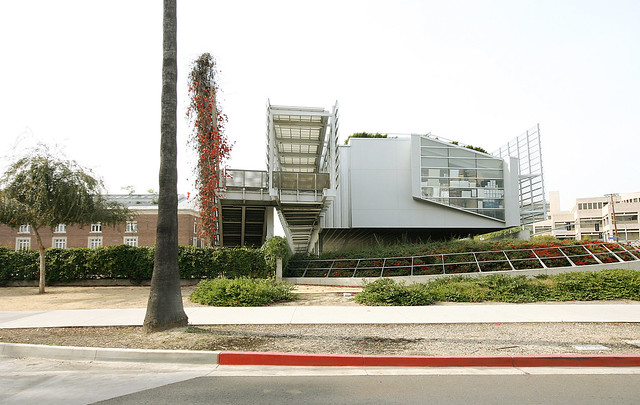
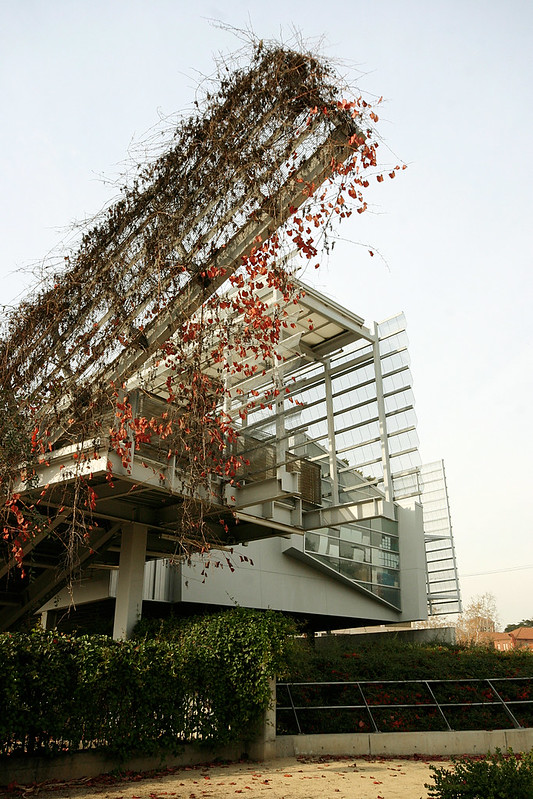
Salick Health Care Office Building, 1991:


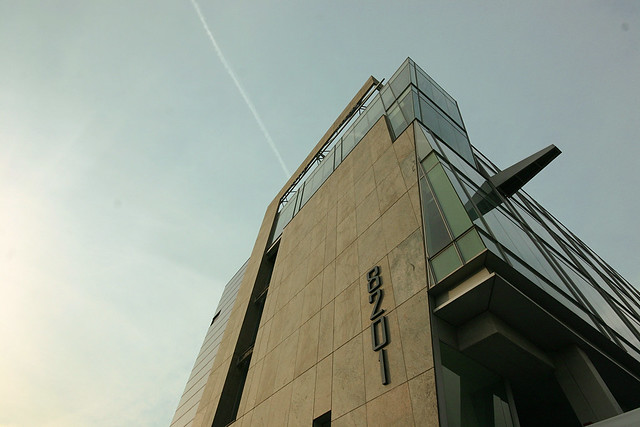
Venice III, 1986:


2-4-6-8 House, 1978:


A few projects by Gehry Partners:
Chiat/Day Office, 1991:
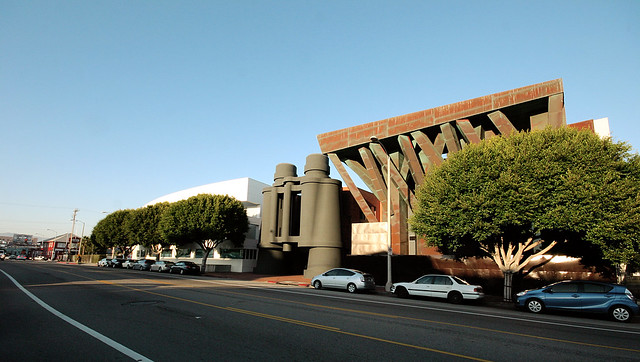

Edgemar Center, 1989:

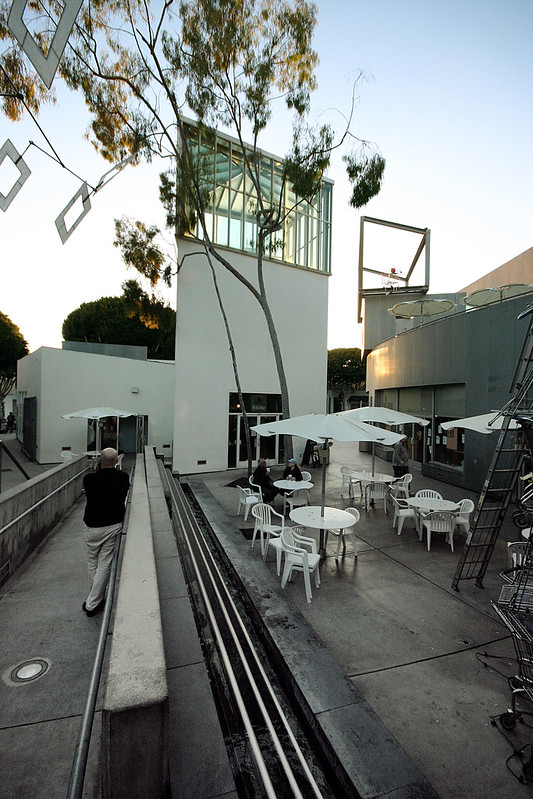
Sketch Foundation Gallery - Air and Space Exhibits, 1984:
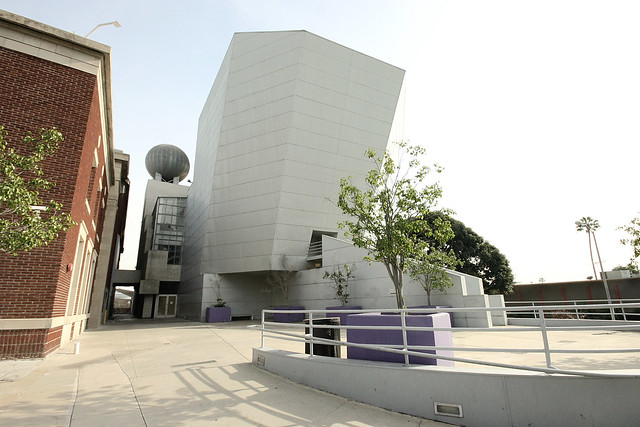
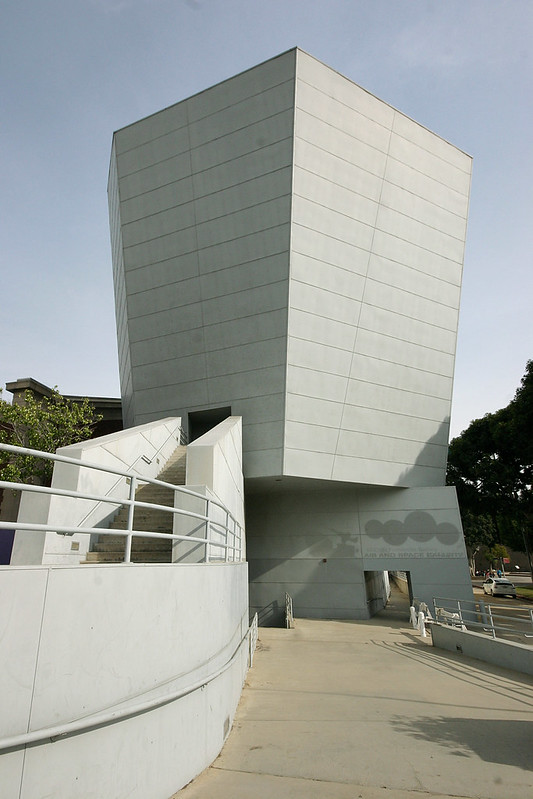
Loyola Law Campus, 1984:
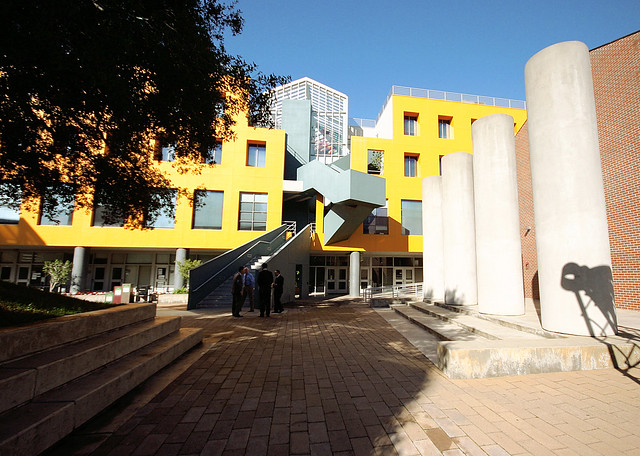
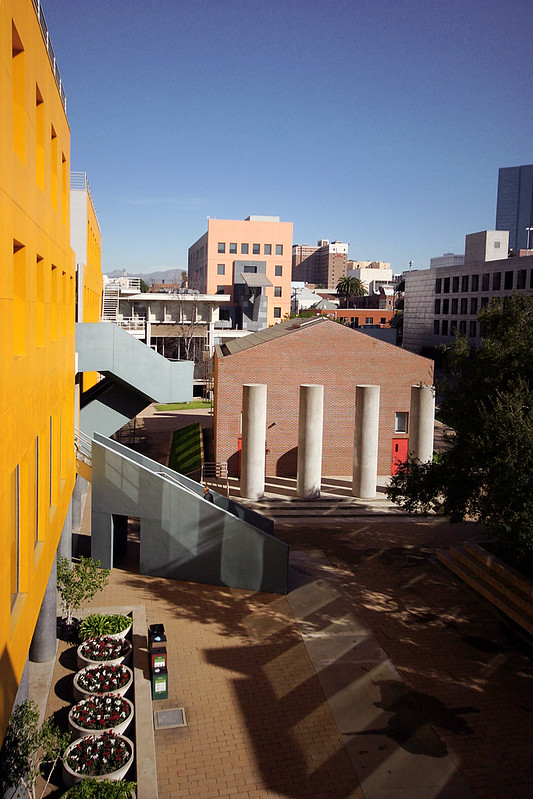
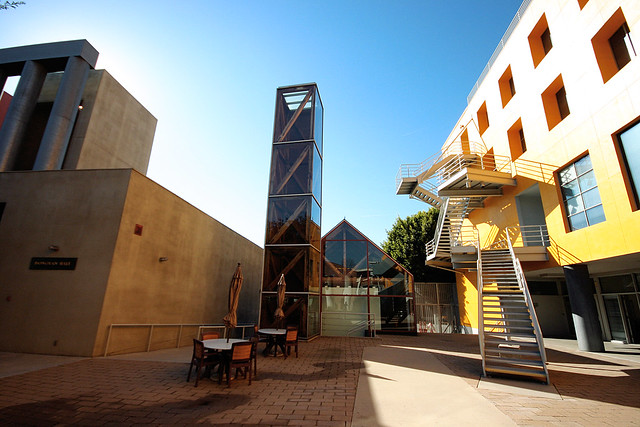
A few projects by Michael Maltzan Architecture:
New Carver Apartments, 2009:
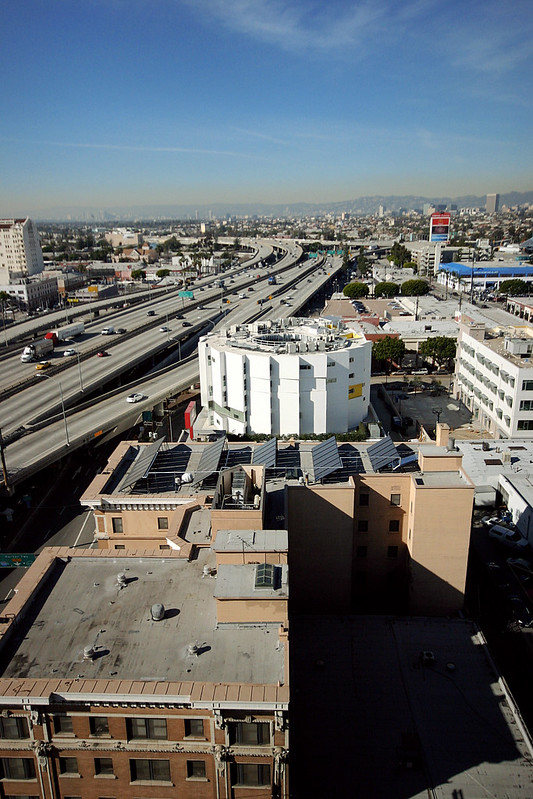
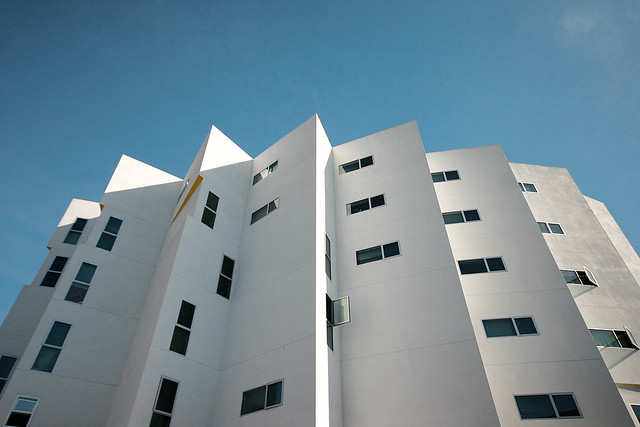
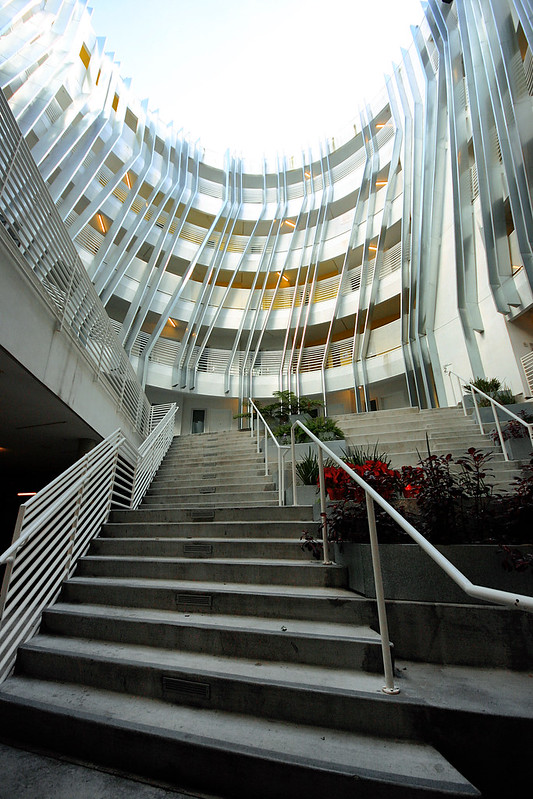
Inner City Arts, 2008:
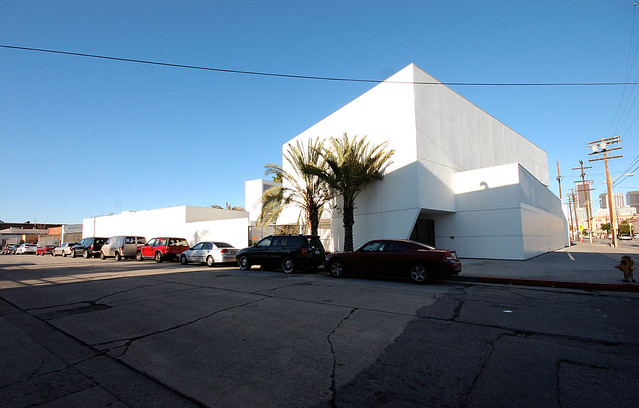
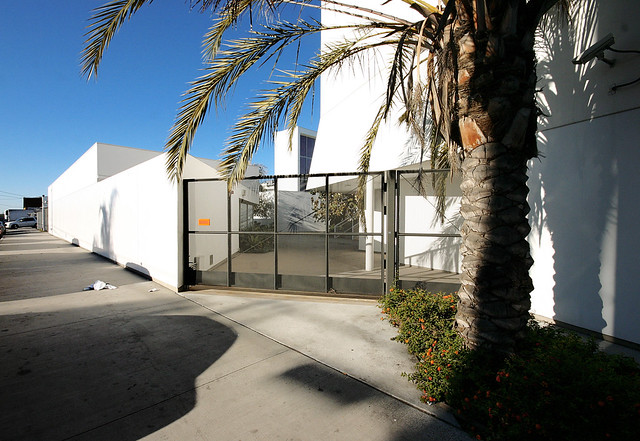
Rainbow Apartments, 2006:
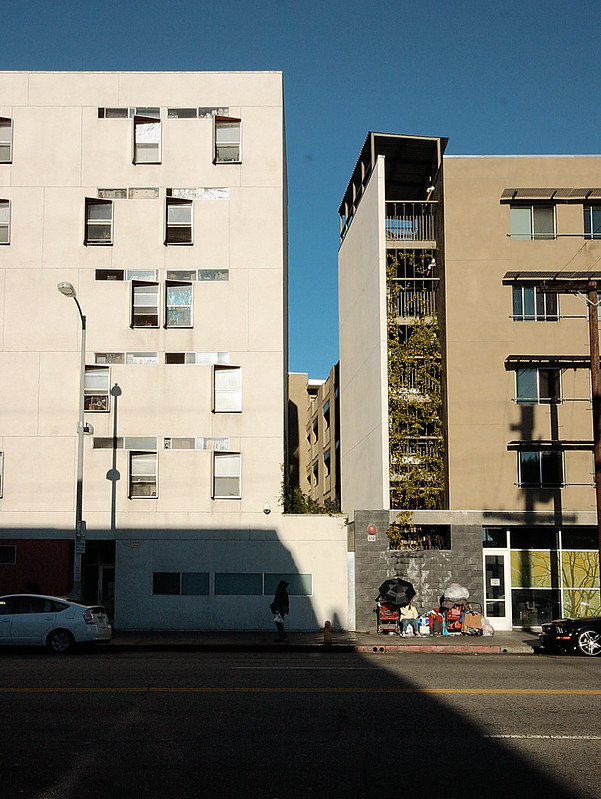
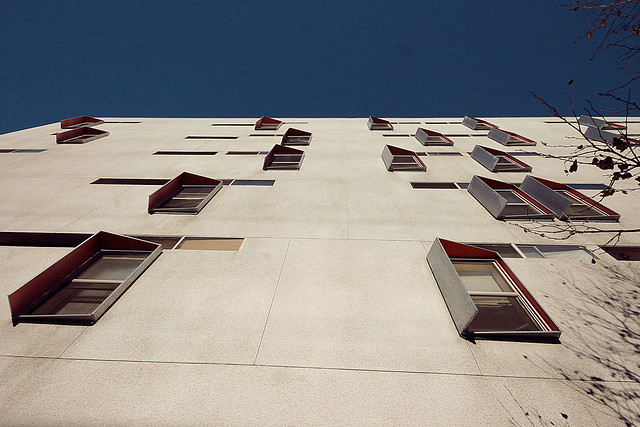
Some of the buildings designed by Eric Owen Moss Architects for Samitaur Projects in Culver City (see my key to the projects here):
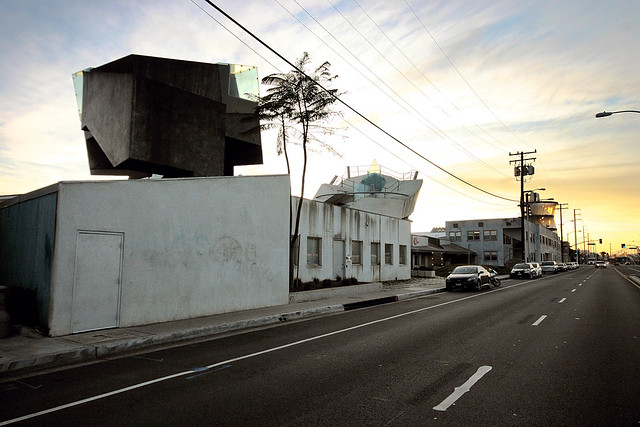
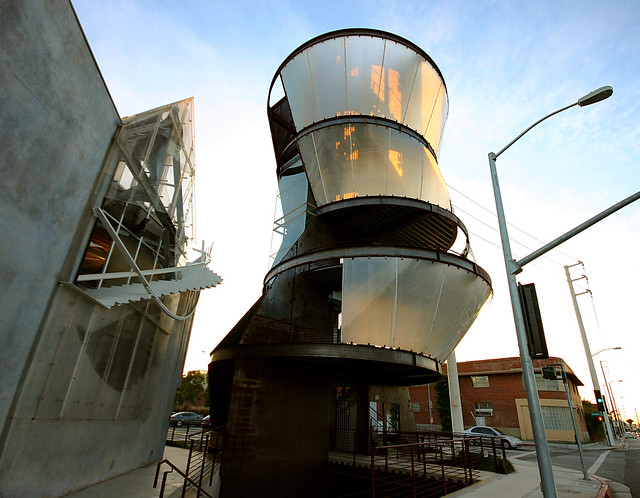
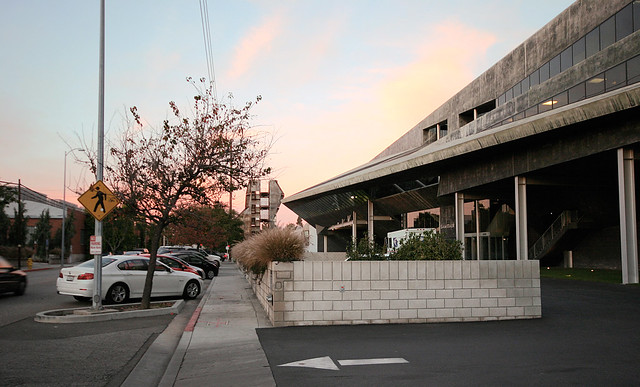

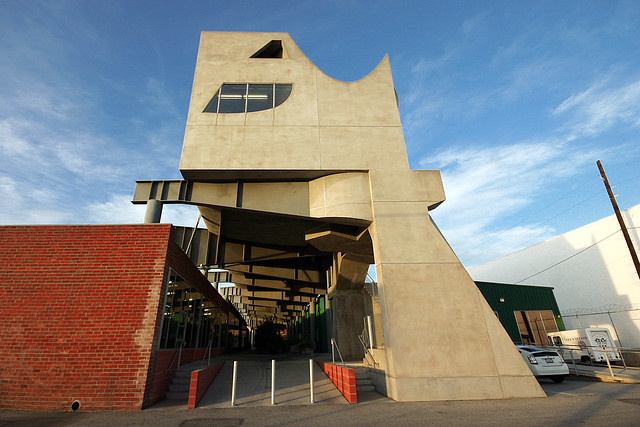
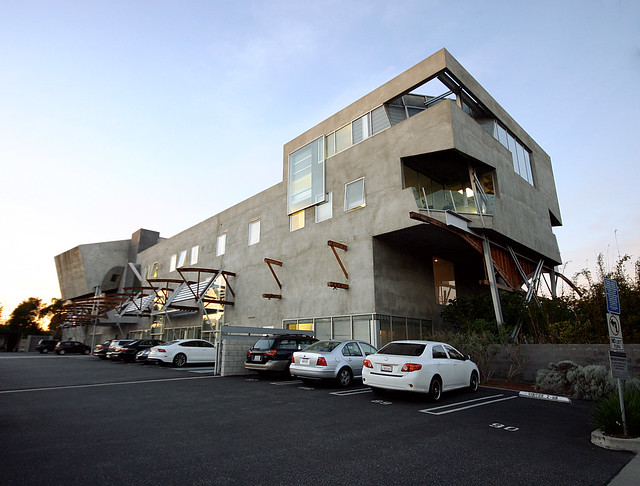

Schindler-Chase House (now MAK Center Los Angeles), R.M. Schindler, 1922:
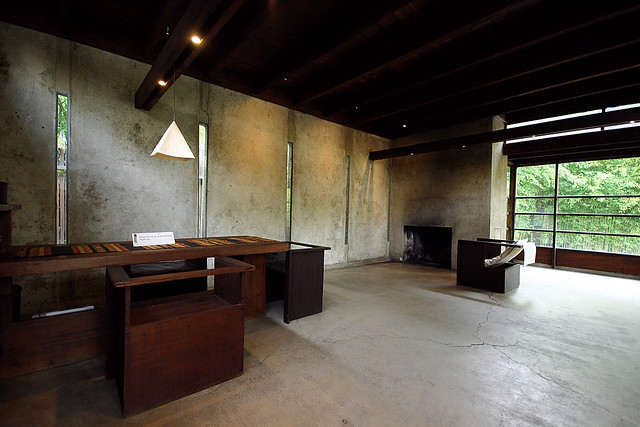


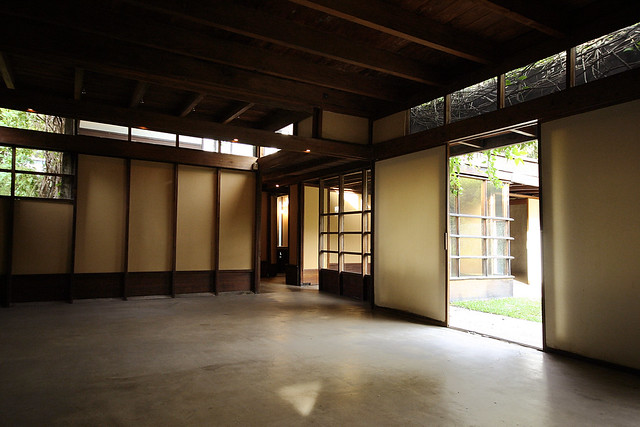
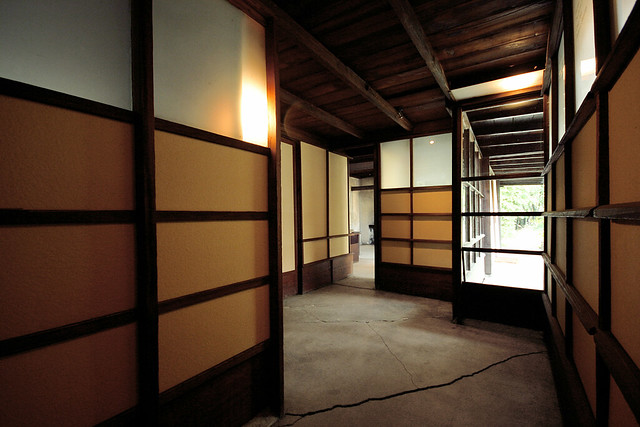
To contribute your Flickr images for consideration, just:
A few projects by Morphosis Architects:
Dr. Theodore T. Alexander Science Center School, 2004:



Salick Health Care Office Building, 1991:



Venice III, 1986:


2-4-6-8 House, 1978:


A few projects by Gehry Partners:
Chiat/Day Office, 1991:


Edgemar Center, 1989:


Sketch Foundation Gallery - Air and Space Exhibits, 1984:


Loyola Law Campus, 1984:



A few projects by Michael Maltzan Architecture:
New Carver Apartments, 2009:



Inner City Arts, 2008:


Rainbow Apartments, 2006:


Some of the buildings designed by Eric Owen Moss Architects for Samitaur Projects in Culver City (see my key to the projects here):







Schindler-Chase House (now MAK Center Los Angeles), R.M. Schindler, 1922:





To contribute your Flickr images for consideration, just:
:: Join and add photos to the archidose pool, and/or
:: Tag your photos archidose
Subscribe to:
Posts (Atom)











